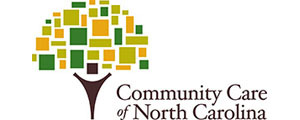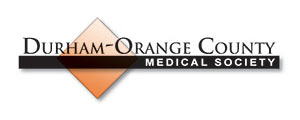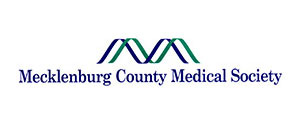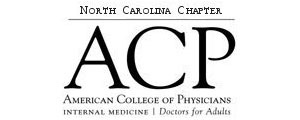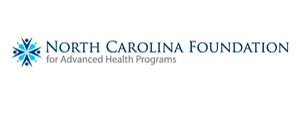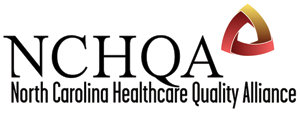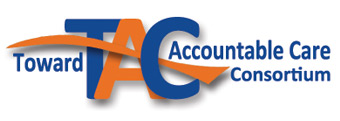What is an Accountable Care Organization (ACO)?
An ACO is a provider-based organization that takes responsibility for meeting the healthcare needs of a defined population with the goal of simultaneously improving health, improving patient experiences, and reducing per capita costs. An ACO must have a strong primary care foundation, and also may integrate other specialists, hospitals, nursing homes, etc. to promote a high degree of care coordination. The following arrangements of providers and services are eligible to participate as ACOs: ACO professionals in group practices, networks of individual practices of ACO professionals, partnerships or joint ventures between hospitals and ACO professionals, and hospitals employing ACO professionals.
What are the financial incentives associated with these changes, and how does each of them work?
There are three tiers to the financial incentives for ACOs: upside-only shared savings; a hybrid of limited-upside and limited-downside shared savings and penalty, and full-upside and full-downside capitation.
Through upside-only shared savings, if quality and patient satisfaction are maintained or improved and there are savings relative to the predicted costs for the assigned patient population, then a portion (approximately 50 percent) of those savings is paid to the ACO (the remaining portion goes to the third party payer), and is distributed to the professionals who contributed to the implementation of those improvements that led to the savings. The shared savings are in addition to fee-for-service payments received by health care professionals.
To calculate shared savings, an actuary can be used who can predict the medical costs for your region or comparable community, and the actuarially valid projected amount can be used as your unmanaged “comparable”. This incentive encourages ACO participants to keep patients in good health, and if ill, to provide optimum care through a team-based approach. While some of the savings should be used to maintain the ACO infrastructure, the majority of savings should be used to reward providers and facilities for extra time and attention devoted to patient management and technology investments. ACOs have found that this model is easy to transition to because it builds on the fee-for-service system that is already in place. However, a weakness of fee-for-service is that it is based on volume while accountable care focuses on value. Additionally, there are some concerns that shared savings is “one-sided” since there are no consequences if there are higher costs or no care improvement.
To offset these concerns, there are additional ACO incentives. Through the hybrid of limited-upside and limited-downside shared savings and penalty, health care professionals receive shared savings for managing costs and hitting quality and satisfaction benchmarks, but also will be liable for expenses that exceed spending targets. This model is less “one-sided” than an upside-only shared savings model as there is an upside and downside risk.
The final incentive, capitation, which is for more established ACOs, replaces fee-for-service payments with flat payments and potential for bonuses and penalties.
It is highly recommended that ACOs do not accept downside risk until after three consecutive years of meeting budget estimates. This is because there are many new partners, roles, moving parts, untested data metrics, and variables beyond the control of the ACO. Taking a smaller share of the savings pool to recognize the absence of downside risk is preferred to accepting the responsibility of unanticipated medical expenses without the tools needed to control them. Capitation arrangement only should be entered into after the ACO has experience with the hybrid of limited-upside and limited-downside shared savings and penalty model.
How will the savings pool be divided?
Technically, each ACO will determine how and to whom the savings will be divided and distributed. Some of the savings that accrues to the ACO may be needed to pay for upfront investments and/or to reinvest in the infrastructure. However, ideally, a good percentage of savings will be distributed among the participants based on their contributions to the improvements that led to the savings.
Are these the same as Bundled Payments or Episode of Care Payments?
An “episode of care payment” is a single amount to cover all the services provided to a patient during a single episode of care, and is called a “bundled payment” when that episode payment covers providers who would have been paid separately under fee-for-service. Such a payment mechanism that excludes payment for treatment of avoidable readmission or hospital-acquired infections motivates better care. These approaches, however, do not incentivize prevention and medical-home coordination to avoid the episode in the first place.
Do “Meaningful Use” incentives apply to ACOs?
“Meaningful Use” payments are included as an ACO financial incentive because the basic health information exchange within your ACO will likely qualify for the Phase Two and Phase Three “Meaningful Use” incentives.
If your ACO is able to establish its data flow needs quickly, there is a good chance that the federal government will help finance the ACO’s health information technology needs through Meaningful Use incentive payments.
Additionally, practices that are not participating in Meaningful Use in 2013 and forward will receive penalties from Centers for Medicare and Medicaid Services. Beginning in 2015, any practice that has not met Meaningful Use in 2013, will receive a 1 percent penalty, and if Meaningful Use is not met, these penalties will continue to increase up to 5 percent over the next 5 years.
Why should we adopt accountable care practices?
The goal of providing value-driven care is to improve patient health outcomes, decrease the amount of chronic illnesses among patients, and ultimately, through improved collaboration and coordination, reduce the cost of health care within the United States. Health spending is unsustainable, and if our current system is not changed then health care costs will soon consume more of our GDP than we are able to collect in taxes and other revenues. Maintaining the current system is not an option, so adopting more collaborative, patient-centered care appears to be the most appropriate alternative.
What is a Patient-Centered Medical Home (PCMH) and how is it associated with accountable care?
A PCMH or medical home is one facet of value-driven care that complements an ACO’s overall purpose. A medical home allows primary care physicians to coordinate care for patients across a continuum of care. Medical homes focus on documenting quality measures and utilizing health information technology to implement better care coordination and patient engagement.
Unlike an ACO, a medical home lacks financial shared accountability, which often motivates health care professionals to work together to provide higher quality care at a lower cost. Medical homes also are more primary care based, while ACOs incorporate the collaboration of primary care and specialty health professionals.
In a sense, medical homes are one portion of an ACO, with the ACO using financial incentives and additional coordination between health care professionals to further improve the quality of care offered to patients.
How will the role of specialists be impacted?
While medical homes promote better care coordination by primary care providers, the establishment of a robust medical neighborhood, which includes specialists and other providers, better ensures effective care coordination. It takes the involvement of specialists to ensure that more specific and appropriate care is provided to patients. Through the ACO model, specialists work with primary care clinicians on diagnosis and treatment, patient management, transition from one clinician to another, and reduction of hospitalization. By working together, primary care and specialty clinicians will be able to improve the quality of care offered to patients and reduce healthcare costs.
What is the current status of established ACOs in North Carolina?
There are several ACOs in North Carolina that have implemented accountable care initiatives. In addition to numerous MSSP-approved ACOs, all the major commercial payers in North Carolina have at least one shared savings arrangement with a NC-based ACO. More than half of the people in North Carolina live in an area served by at least one ACO. View the list of current North Carolina ACOs
If health reform is repealed, will efforts to establish ACOs still exist?
The value-based reimbursement movement was well underway before the Affordable Care Act was passed. Also, over the past year, ACOs have gained significant traction in the private sector. Without fundamental changes to how care is delivered and paid for, costs will continue to increase at alarming rates. Our health care delivery system needs solutions like accountable, value-driven care models to address the unsustainable growth in the cost of health care in this country, and ACOs are showing significant promise in curbing those cost increases and improving the quality of care. Increasing awareness of problems physicians and patients have experienced with the fee-for-service system has resulted in a growing number of initiatives that have common features of accountability at the medical community level, transparency to the public, flexibility to match local strengths to value-enhancement opportunities, and shifting to paying for value over volume.
What is needed to forge a successful ACO?
There are eight elements that are keys to developing a successful ACO. They include integrating teamwork within a medical practice; involvement of primary care/specialty clinicians and hospitals, administrative functionality; financial incentive for accountability of higher performance in patient care; implementing Health Information Technology to more efficiently measure and collect baseline and performance data; implementing the best practices across a continuum of care; improving patient engagement and patient-centeredness; and providing care to a critical mass of a patient population.
For an ACO to be successful, one element cannot be implemented without the others. Although implementing this model is not a simple task, making these changes and incorporating these eight elements will eventually lead to better patient outcomes and lower health care costs. For more information, click here to read The Physicians Accountable Care Toolkit.
How will value-driven care impact me as a physician?
The purpose of providing more patient-centered, value-driven care is to reduce the amount of preventable conditions or diseases that usually result in costly patient hospital visits. Realigning incentives will allow physicians and their teams to focus more on providing preventative and proactive care rather than reactive care. Value-driven care should center on improved care coordination, quality, and patient engagement and satisfaction, which should result in increased savings.
How will the patient-physician relationship be impacted?
Because patient engagement is a central focus of accountable care models, the patient-physician relationship should be enhanced. By implementing value-driven care, clinicians will more easily be able to focus on the quality of care offered to patients rather than focusing on the volume of patients seen on a given day. Stronger relationships are built between physicians and their teams and the patients, as everyone works to promote wellness and chronic care management. The team approach will be extremely important because the accountable care model will rely on team members such as care coordinators, health coaches and navigators, etc. to ensure that patients understand and comply with their treatment and medication plans. With this approach, patients become more involved in their medical care. By being proactive and more engaged with patients, physicians and their teams will help reduce chronic conditions and instill a healthier lifestyle in their patients, in turn reducing health care costs.
With value-driven health care, access to information is key, as is the ability to analyze that data. What types of information will need to be tracked?
ACO data combines quality, efficiency and patient-satisfaction measures. For example, clinical information is needed for point of care; claims data is needed to assess costs and often times patient compliance; population health data helps identify trends that need addressing; and quality, efficiency, and patient satisfaction provide information on how the ACO is performing.
There are three categories of data needs for an ACO: baseline data, which acts as a beginning reference point for cost and quality to determine outliers in that area that are then addressed to enhance patient care and experience; performance data, which is supplemental to baseline data and is measured based on nationally recognized metrics that monitor quality and efficiency of care and help prove that cost effective care is being provided; and data as a clinical tool, which allows for the best practices across to care continuum to be determined and adopted.
How will electronic health records and other forms of technology be incorporated into this model of care?
As the health care system continues to evolve, so do the methods used to provide medical care. Currently, electronic health records (EHRs) are used to increase the functionality of a practice and improve capabilities to provide better care to patients. As ACO models become more prominent, the scope of information sharing will improve. For example, along with EHRs, the Health Information Exchange (HIE) will optimize the sharing of patient information between clinicians, allowing them to work together to provide better care.
The goal of an Information Technology model for ACOs is to allow clinicians to provide decision support capabilities at the time of care by expanding access to patient records and ability to compare data collection. By sharing data we can determine gaps in care delivery and can report capabilities to state and federal agencies. It also will contribute to financial impact, value reporting and payor negotiations.
How will the Toward Accountable Care Consortium and Initiative assist physicians and their practices through this transition process?
The Toward Accountable Care Consortium and Initiative (TAC), which is comprised of over 40 local and state medical associations, was created to help the medical community move toward more value-driven, patient-centered care. To do this, the initiative will distribute resources to its members, such as user-friendly documents that contain relevant information for all physicians regarding accountable care; at least 20 specialty-specific toolkits; a merit-based, shared-savings pool distribution guide; a guide to negotiating bundled payments; related webinars and educational sessions; articles, podcasts, and short videos, and other print and social media.
Recent Posts
- Four Years Later TAC Boasts 40+ Members and Dozens of Toolkits
- Two More ACO Partnerships Formed in NC
- Duke Connected Care: A Learning Opportunity While Serving the Community
- Pioneer ACO Model Generates Medicare Savings, Independent Report Reveals
- NCMS Foundation Seeks Rural Providers for ACO Opportunity
Archives
- August 2016
- November 2015
- May 2015
- March 2015
- February 2015
- January 2015
- November 2014
- October 2014
- March 2014
- January 2014
- November 2013
- October 2013
- September 2013
- August 2013
- July 2013
- June 2013

